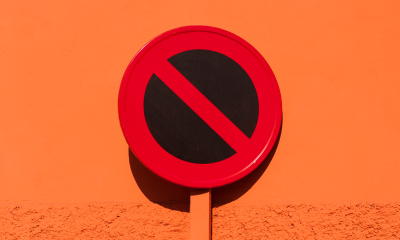Technology
Foldable phones will be a short-lived fad

This week, Samsung previewed an early version of its highly anticipated foldable smartphone. And Royole, a Chinese company, launched its own take on the concept just days before. Other manufacturers, including Huawei, are rumored to be joining the fray next year too.
But let me tell you before you get too attached to these products: You probably won’t be buying one. Foldable phones are a solution to a problem that doesn’t exist, and — from what I’ve seen so far — a clunky one. They will dominate the headlines next year and perhaps the year after that, and then they’ll go the way of 3D televisions and portable VR.
How can I be so sure this early in the game? It’s simple: Try as I might, I cannot think a single reason why I’d buy a foldable phone, except perhaps for the coolness factor.
Yes, the screen unfolds into a bigger screen. But do you really need that bigger screen? The tablet market is shrinking, and the Android tablet market is shrinking even more. Smartphones have shed the bezels around their displays, making them big enough to watch the occasional video or read a longer article (for books, you want to use an e-book reader anyways), while the phone maintains a manageable form factor.
To do serious work, you’ll want to switch to a computer, anyways — smartphones that can function as a PC exist today, but firing up your laptop is almost always more practical.
Gaming might be a potential use for foldable phones, too, as it’s nearly always better on a bigger screen. Plus, it might be easier to fit more battery and processing power into a foldable phone than a regular one, which makes sense for a gaming device. The foldable phone might turn out good enough to become a niche product. But I don’t see it sweeping the smartphone market any time soon.
One could argue that maybe, if the phone was the tablet, you’d use the tablet more. But the phone will never be the tablet. Take a look at your phone; it doesn’t mater which brand you have. Now imagine the screen unfolding to double its size (or look at the video of Samsung’s foldable phone). It’s still nowhere near a tablet you’d consider buying — what you get is either an unnaturally wide phone or an oddly-sized, too-small tablet. Sure, manufacturers will likely play with screen sizes a bit. Royole FlexPal’s screen unfolds into something far more tablet-like; but when folded, it’s clunky and way too wide.
Two reports indicate that Samsung is struggling with this issue as well. In June, a photo of a dual-screen phone surfaced — allegedly an abandoned Samsung concept. It was nowhere near as cool as an actual foldable phone, but it suffered from the same problem — the form factor didn’t make sense at all. And weeks ago, a report said that Samsung still hasn’t decided whether its foldable phone should fold horizontally or vertically. I have no way of knowing whether these reports are accurate, but I wouldn’t be surprised if they are. A phone fits the palm of your hand. Double that size, and you get a form factor that currently doesn’t exist, and for a good reason — no one wants it.
And that’s just the size of the screen. Consider the other issues. The flexible phone will be at least twice as thick as today’s phones. It will be hard to operate with one hand. And the software needs to catch up, or the overall experience will be buggy and slow.
The good news is that Google is working on a version of Android that’ll play nice with foldable phones. But pile all those drawbacks together. Can you imagine this thing actually being good? The best I can do is imagine it being bearable, and that’s after a few years of refinement.

Royole’s FlexPal looks like a decent-sized tablet when expanded. But when folded, it’s a clunky, wide phone.
Image: Karissa Bell/Mashable
Now, flexible screens — that’s another matter. To create its foldable phone’s screen, Samsung switched from glass to a “composite polymer” which can be folded “hundreds of thousands of times” without breaking. This likely makes this screen much harder to break than the screen of smartphones today, and that’s definitely a feature I want to see on my next phone. And the idea of having a screen that can conform to any shape is exciting. I can imagine this tech being used in the automotive industry, for example.
Farther out in the future (think decades, not years), one can imagine a device that folds into something really tiny and extends into a large, touchscreen, tablet-like device. What Samsung has shown us might be laying down the foundation for something like that.
But numerous technological breakthroughs need to happen to get there. In a way, foldable phones are like smart glasses — early harbingers of a future that may one day be amazing. But as forward-looking as they were, Google’s smart glasses weren’t good enough for everyday use, and were ultimately scrapped. I applaud Samsung for trying something different in a somewhat stale industry, but I suspect the same thing will happen to foldable phones.

!function(f,b,e,v,n,t,s){if(f.fbq)return;n=f.fbq=function(){n.callMethod?
n.callMethod.apply(n,arguments):n.queue.push(arguments)};if(!f._fbq)f._fbq=n;
n.push=n;n.loaded=!0;n.version=’2.0′;n.queue=[];t=b.createElement(e);t.async=!0;
t.src=v;s=b.getElementsByTagName(e)[0];s.parentNode.insertBefore(t,s)}(window,
document,’script’,’https://connect.facebook.net/en_US/fbevents.js’);
fbq(‘init’, ‘1453039084979896’);
if (window._geo == ‘GB’) {
fbq(‘init’, ‘322220058389212’);
}
if (window.mashKit) {
mashKit.gdpr.trackerFactory(function() {
fbq(‘track’, “PageView”);
}).render();
}
-

 Business7 days ago
Business7 days agoFormer top SpaceX exec Tom Ochinero sets up new VC firm, filings reveal
-

 Business6 days ago
Business6 days agoConsumer Financial Protection Bureau fines BloomTech for false claims
-

 Business4 days ago
Business4 days agoLangdock raises $3M with General Catalyst to help businesses avoid vendor lock-in with LLMs
-

 Entertainment4 days ago
Entertainment4 days agoWhat Robert Durst did: Everything to know ahead of ‘The Jinx: Part 2’
-

 Business6 days ago
Business6 days agoKlarna credit card launches in the US as Swedish fintech grows its market presence
-

 Entertainment3 days ago
Entertainment3 days agoThis nova is on the verge of exploding. You could see it any day now.
-

 Entertainment7 days ago
Entertainment7 days agoHow to watch ‘The Sympathizer’: Release date and streaming deals
-

 Entertainment6 days ago
Entertainment6 days agoHow to set boundaries in the early stages of dating






















